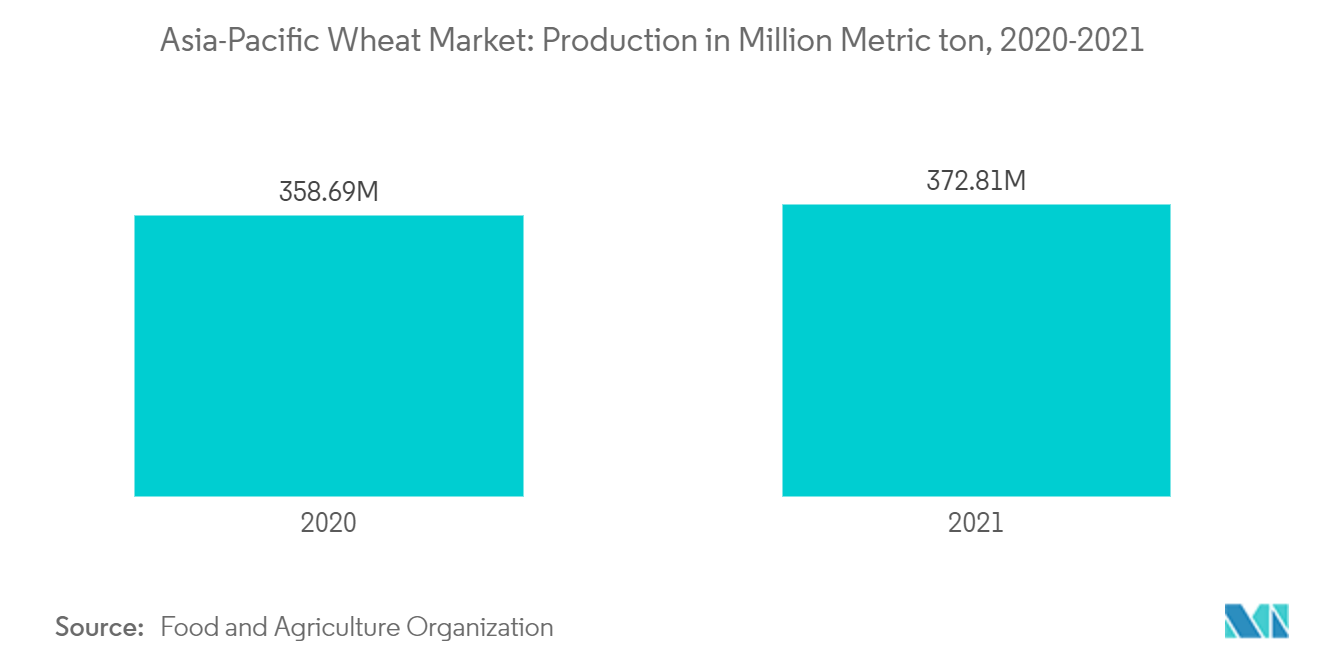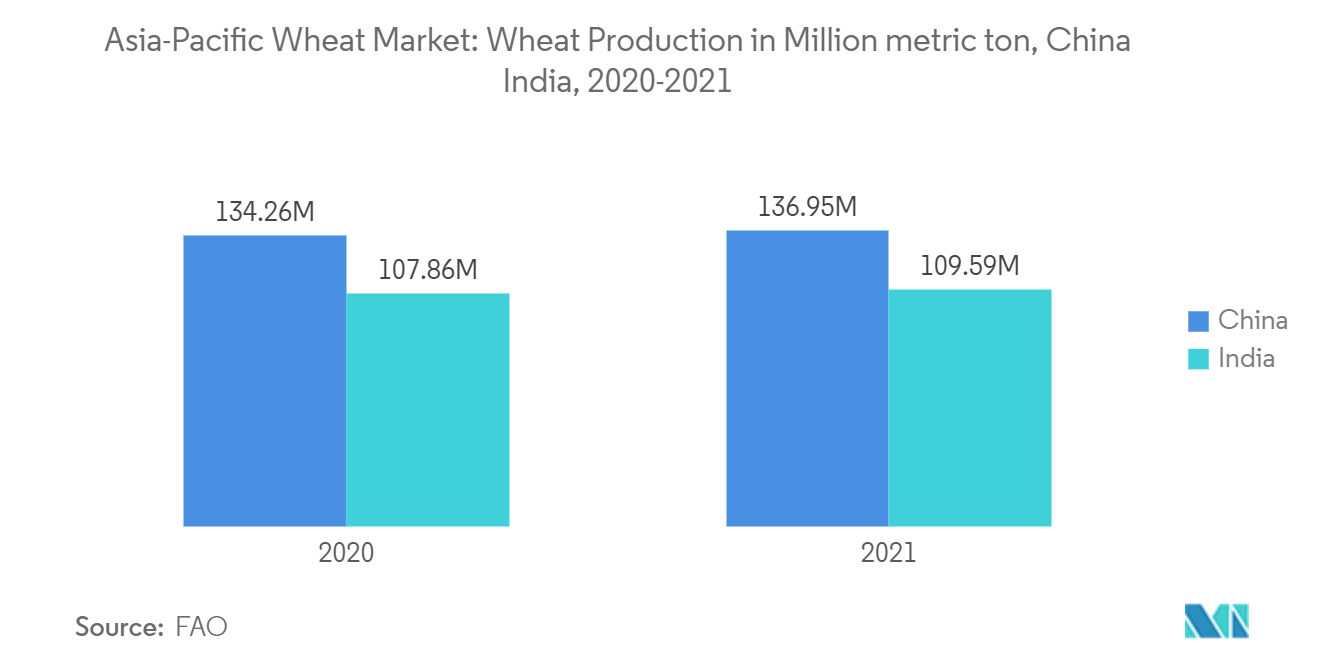Market Trends of Asia-Pacific Wheat Industry
The Increasing Demand for Wheat Protein
- The demand for wheat protein is increasing due to the rising health consciousness among consumers and as an alternative meat product. Additional factors, like increased protein intake by athletes for muscle gain and to increase strength, drive the wheat protein market, encouraging wheat production in this region.
- The animal feed industry has been a significant user of wheat proteins, especially vital wheat gluten, due to its functionality as a binder and alternative to fish- and animal-based feeds. Vital wheat gluten is a protein-rich powder obtained from wheat flour by washing the dough with water until the starch and other components are removed, leaving behind a concentrated form of wheat protein.
- The companies focus on product innovations and partnerships as key strategies to build their position in the market. For instance, in September 2021, ADM supplemented its product offering by introducing a range of wheat proteins, including Prolite MeatTEX textured wheat protein and Prolite MeatXT non-textured wheat protein.
- The demand for wheat gluten is increasing due to the change in consumers' eating habits. Health issues and disorders like diabetes, cholesterol, blood pressure, etc., are growing in all age groups. Due to increasing awareness about healthy living and nutritional food, consumers prefer organic and natural food. This increased preference for wheat protein and increased production of wheat in the region from 347.1 million metric tons in 2018 to 372.8 million metric tons in 2021 are the factors that increased the market value of the region's wheat protein value from USD 325 million in 2018 to USD 399.8 million in 2021.

China is the Largest Producer of Wheat
- In Asia - the Pacific region, India and China occupy the major cultivated area in the region with 31.1 million ha and 23.5 million ha. Even though India has the largest area under wheat cultivation, China has higher wheat production due to improved seed availability. For instance, China produced 136.9 million metric tons, and India produced 109.5 million tons of wheat in 2021.
- Wheat is one of the most important staple foods of the Chinese population, accounting for 40% of grain consumption in the country. The growers are expected to cultivate more wheat during the forecast period to compensate for the deficit in production and demand for wheat due to the war between Ukraine and Russia. Therefore, factors such as an increase in growers' income are expected to drive the growth of the wheat segment during the forecast period.
- In China, more than 95% of wheat is sown in the autumn. It is cultivated extensively in China's Yellow and Huai River valleys, where the crop is rotated with maize. Sumai 3, a major wheat variety selected by breeders for its desirable characteristics, is used globally to improve scab resistance. Hence, the varieties with resistance to major infestations are expected to grow.
- Even after being the largest wheat producer, China still has to import wheat to meet wheat consumption in the nation. China imported around USD 1.3 million in wheat in 2021, which increased from USD 1.1 million in 2020. This indicates that Chinese wheat imports will likely increase during the forecast period.

